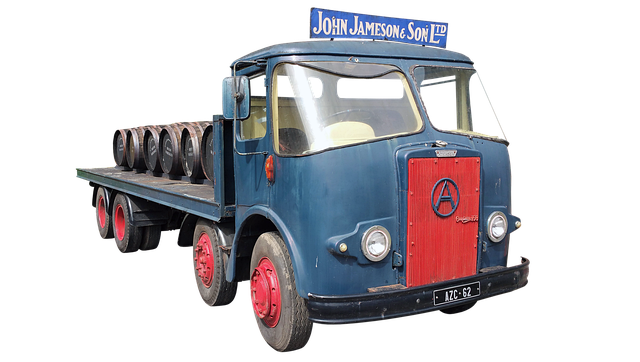In a competitive market for top-rated trucking insurance, clear communication is key. By defining policy parameters like vehicle types, cargo specifics, liability limits, and exclusions, insurers and truckers can streamline claim resolution. This proactive approach enhances trust, ensures quicker settlements, and strengthens the reliability of the insurance ecosystem. Misalignments in claims and policies, often due to misunderstandings about limitations and exclusions, lead to disputes and financial risks. Clarifying these upfront prevents such issues, fostering strong relationships between insureds and carriers.
In the complex landscape of trucking operations, ensuring claims alignment with coverage promises is paramount. This comprehensive guide delves into the intricate process of resolving disputes, a critical aspect often overlooked yet crucial for smooth business continuity. We explore the nuances of understanding coverage promises, identifying common misalignments, and adopting effective dispute resolution strategies.
Furthermore, we shed light on top-rated trucking insurance providers and their essential features, emphasizing seamless claims processes. By implementing preventive measures through clear communication, meticulous documentation, and regular policy reviews, businesses can navigate claims with confidence, avoiding disputes and reaping the benefits of robust coverage.
Understanding Coverage Promises and Claims Alignment

Understanding the nuances of coverage promises is paramount in the realm of top-rated trucking insurance. When a claim is filed, it’s crucial that the demands align precisely with what the policy guarantees. Misalignment can lead to delays and disputes, which often arise from differing interpretations of the policy’s scope. By clearly defining the extent of coverage, including specifics on vehicle types, cargo, liability limits, and exclusions, insurance providers and trucking companies can ensure smoother claim resolution processes.
This alignment is particularly critical in the dynamic landscape of trucking, where operations involve a variety of cargoes and vehicles. Claims for damage, loss, or liability must be accurately assessed against these pre-established parameters to maintain the integrity of the policy. This proactive approach not only facilitates quicker settlements but also builds trust between insured parties and their insurance carriers, fostering a more robust and reliable insurance ecosystem for all involved in the trucking industry.
– Definition of coverage promises in trucking insurance

In the realm of trucking insurance, coverage promises serve as the cornerstone of protection for commercial vehicle operators and businesses. These promises, often referred to as policy benefits or guarantees, outline the extent and conditions under which an insurer will compensate the insured party in case of unforeseen events or losses related to their trucking operations. Top-rated trucking insurance providers typically offer a comprehensive suite of coverage options designed to mitigate financial risks associated with various trucking-related activities, including liability for property damage, bodily injury, cargo loss or damage, and more. By understanding these coverage promises, truckers can make informed decisions when selecting their insurance policies, ensuring they receive the protection needed to navigate the bustling transportation industry.
– Importance of aligning claims with policy coverage

In the realm of trucking, where operations are complex and risks are high, aligning claims with policy coverage is paramount. It’s not just about fulfilling legal obligations; it’s a strategic move to ensure businesses stay protected and profitable. Top-rated trucking insurance isn’t just a safety net—it’s a promise of financial stability should the unexpected occur. When claims match the scope of the policy, carriers can avoid costly misalignments that could lead to denied claims or excessive payouts.
This alignment ensures that the coverage promises made by insurers are met with accurate, eligible claims. It fosters trust between insureds and insurers, streamlining the dispute resolution process. For trucking companies relying on top-rated trucking insurance, this means peace of mind knowing their investments in coverage will shield them during challenging times. Effective claim management, coupled with comprehensive policy understanding, is key to navigating the intricate landscape of trucking insurance.
– Common misalignments between claims and coverage

In the realm of top-rated trucking insurance, one of the primary challenges lies in resolving disputes that often arise from misalignments between claims and coverage promises. Many claims are complicated by misunderstandings about what is and isn’t covered under a policy. For instance, drivers or companies might file claims for damages that exceed the limits specified in their policies, or they may omit crucial details about the incident, leading to denials or undercompensation.
Another common misalignment occurs when individuals or businesses fail to fully comprehend the exclusions and deductibles within their policies. Some top-rated trucking insurance providers offer comprehensive coverage, but specific scenarios like environmental damage or worker’s compensation might not be included. Clarifying these nuances from the onset can prevent disputes and ensure claims are settled promptly and fairly, fostering a robust relationship between insured parties and their carriers.
Resolving disputes effectively is vital for maintaining the integrity of top-rated trucking insurance policies. By ensuring that claims align with the promised coverage, industry players can foster a culture of transparency and trust. Understanding common misalignments and proactively addressing them through clear communication and thorough documentation will enhance the overall efficiency of the claims process, ultimately benefiting all stakeholders in the trucking industry. This practice underscores the importance of choosing reliable, top-rated trucking insurance providers who prioritize alignment and accuracy.
